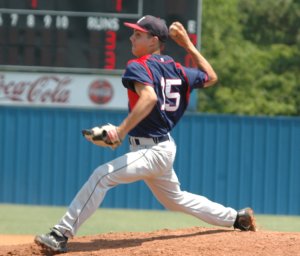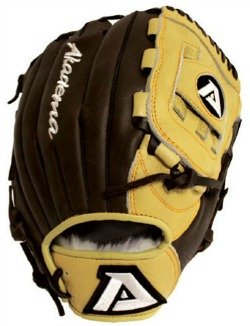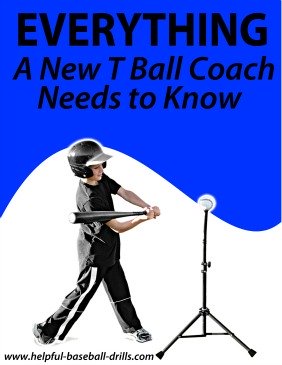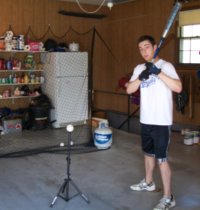The Baseball Pitching
Life

Would you like to get a baseball scholarship to college?
Baseball pitching is your best chance.
Unlike football or basketball, college baseball players seldom get full ride scholarships.
Division I universities are only allowed to offer 11.7 baseball scholarships, and almost all players receive just a partial scholarship.
Typically pitchers will receive a larger partial scholarship than position players.
Why is this? Shouldn’t home run hitters be the most sought after players?
No, from little league to the majors, baseball pitching is the highest demand position.
Just check out the major league draft every year.
Pitchers dominate the early rounds of the draft.
The old saying is you can never have enough pitching.
And everyone agrees that good pitching will beat good
hitting.
Pitching Arm Injuries
One of the reasons baseball pitching is in such high demand is that pitchers have a high rate of injuries to their throwing arm.
Just this spring, on a cold high school game, my son pulled a muscle in his back.
After a week of rest, he was able to swing a bat.
After a couple of weeks he could play in the field.
But it was five weeks before he could pitch again.

Another pitcher went down with an elbow injury soon after my son’s injury.
In just a couple of days the teams’ pitching rotation went from being in great shape to scrambling.
Many professional baseball pitchers’ careers have ended because of an injury.
Typically a position player in the minor leagues reaches a level where the quality of pitching is better than his ability to hit.
This will send most of these players off looking for another career.
Pitchers on the other hand are just as likely to end their baseball dream because of an injury as they are due to performance.
Reduce Your Chances of Arm Injury
If you are thinking about becoming a pitcher there are lots of opportunities for you, but also lots of pitfalls you need to be aware of. All of these pitfalls can lead you to an arm injury.
But there are lots of things you can do to reduce your chance of an injury.
In the article Pitching Drills it is discussed what a pitcher should do after having pitched. Check out this article if you are a pitcher and be sure to follow its guidelines.
And let me tell you, 11 or 12 is not too young to begin the routines mentioned this article.
A young age is the perfect time to start good pitching habits.
Another important article to read on this website is Baseball Pitching Instructions. The discussion in this article centers around two very important pitching points.
The first point is getting your legs and lower body into your delivery. The second point is getting your body into pitching shape.
These two points are critical to helping you maximize your pitching velocity, and preventing arm injury.
If You Are a Parent - Take An Active Role
If you are the parent of a youth baseball pitcher, then you have some extra responsibilities regarding your son.
You should have a clear understanding with your son’s little league baseball coach on pitching limitations with your son.
Once a pitcher reaches the age of 16 or 17 he should be able to speech up for himself, but until that age it is up to you.
If this coach has had any experience coaching little league baseball, then you won’t be the first parent to approach him on pitching limitations.
There are baseball tournaments where teams could play 4 or 5 games in one day, really.
Coaches are often forced to use pitchers more than they know is best.
So if you have put the bug in his ear that you object to this abuse, then hopefully he is not going to pick your son to over work.
Pitching Limitations
What pitching limitations should you tell the coach to follow?
The Little League Organization does a good job of keeping their rules up to date, so if your team, league or organization does not have pitch count limitations, then I suggest you go to www.littleleague.org and check out their pitching rules.
My advice is to follow their limits on pitch counts and on days of rest after pitching.
Having been a little league baseball coach for many years I seldom advocate approaching a coach on playing positions.

But pitch counts and days of rest are exceptions to this rule.
Do not just talk to the coach, let it be known you expect these pitching guidelines to be followed 100% of the time.
You will be kicking yourself later on if you don’t do this.
Pitchers are said to be a different breed. As little league pitchers get older and quit playing other positions, they get into different game day routines.
If they are starters, they may want to throw a bullpen before or after a game.
These players usually become good score keepers.
Nothing wrong with that, it keeps them in the game.
Relief Pitching
Relief pitchers should also learn game day routines. If you are a reliever you need to know when to stretch and how long you need to warm up.
Letting the coach know your desired warm up time will help both you and him.
And as a reliever you should try to learn what the strike zone happens to be in this game.
If the umpire has a low strike zone, then you want to know that and you want to try and live there.
Track the other teams’ hitters also. Make mental notes when you see a batter chase a high hard one.
I’ll bet he will go after it again later in the game.
Baseball pitching is a great position to play.
And the rewards can be great.
Just be sure and take good care of your throwing arm and shoulder.
Here is a listing of Pitching Drills on our website:
Pitching Tips - Bu;;pens, Long Toss & Workouts
Little League Pitching - Pitching Limitations & Pitching Importance
Baseball Pitching Drills - Longer Stride, Point Game
Baseball Pitching Instructions - Use
Your Legs and Do Not Short Arm Your Pitches
Youth Pitching Instruction - Pitching Mechanics
Baseball Throwing Drills - Part 1
Baseball Throwing Drills - Part 2
Baseball Pitching - Reduce Your Chance of Arm Imjuries
Baseball Pitching Tips - Little Pitching Tips That Can Produce Big Results
Pitching Baseball Great Ideas - Pitching Inside & Tipping Pitches
Pitching a Baseball - How to Learn

Return From The
Baseball Pitching Life To Pitching Drills
Return From The Baseball Pitching
Life To Helpful Baseball Drills
Do You Want To Hit At Home?
Subscribe to "Extra Innings" our every few weeks newsletter loaded with baseball drills, ideas and stories.
Looking For the Best Wood Bats at the Lowest Prices?




New! Comments
Have your say about what you just read! Leave me a comment in the box below.